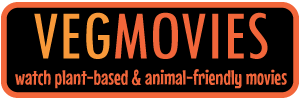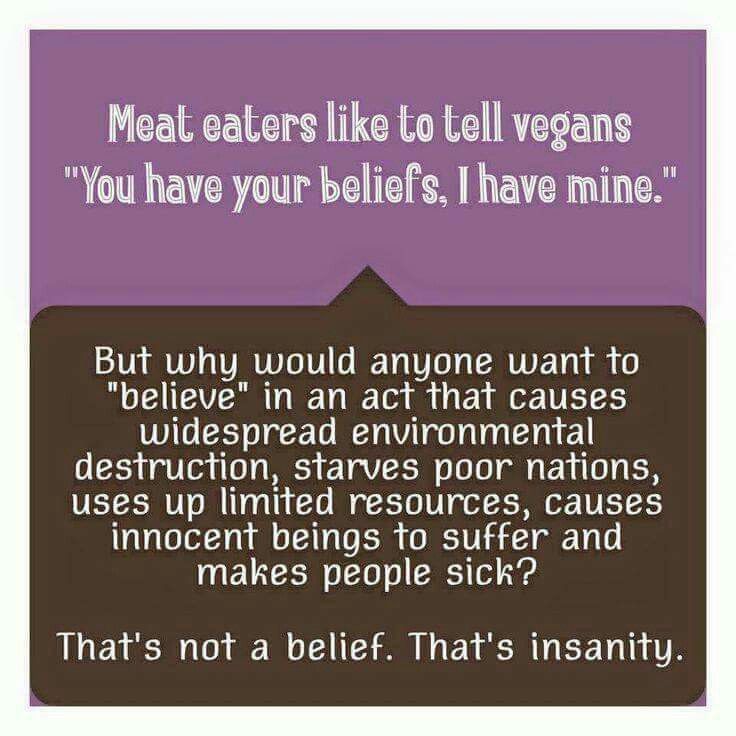Veganism-Environmental Guide and Nutrition in Species Ministry. VEGAN = LOVE FOR PEOPLE, ANIMALS, PLANET.
Translate
MISSION STATEMENT
"V-EGANISM educates people and helps people and animals regarding the political and social justice cause, Veganism, which is a philosophy and way of living which seeks to exclude--as far as is possible and practical--all forms of exploitation of, and cruelty to, animals for food, clothing, cosmetics, household products, entertainment, service or any other purpose; and by extension, promotes the development and use of animal-free alternatives for the benefit of humans, animals, and the environment."
Healthy Body, Mind & Spirit Maneki Neko Cat

Love & Peace Maneki Neko Cat

Animals Killed Counter
Animals Slaughtered:
0 marine animals
0 chickens
0 ducks
0 pigs
0 rabbits
0 turkeys
0 geese
0 sheep
0 goats
0 cows and calves
0 rodents
0 pigeons and other birds
0 buffaloes
0 dogs
0 cats
0 horses
0 donkeys and mules
0 camels and other camelids


Friday, July 18, 2014
Food-for-Thought Animal Ads
Thursday, July 17, 2014
Buddhism and the Environment
"In an age of increasing environmental destruction, Buddhism can inspire the ecological awareness that’s necessary for a more balanced existence."
Below is a great article that ties Buddhist beliefs with a healthy environmental awareness:
Wednesday, July 16, 2014
7 Common Cooking Problems You May Run Into When Going Vegan
Here is a fabulous article for people who are having some issues regarding the dietary part of veganism:
Tuesday, July 15, 2014
What Does ‘Vegan’ Really Mean?

Here is a terrific article that reminds everyone what it truly means to be vegan, regardless of how people or society makes an attempt to redefine it. Veganism can never be redefined unless the person who coined the name/definition redefines it themselves:
Monday, July 14, 2014
Vegans Better for Environment than Meat-Eaters
Friday, July 11, 2014
Singapore Film Promotes Animal Rights/Adoption
Thursday, July 10, 2014
How Veganism Changed These People
(*Note: the first line above is sarcasm, hence the quotes.)
Below is a wonderful, inspirational article of people who became vegan. A Gentle World volunteer did an experiment on her Facebook page where she simply asked people to complete the following statement: “Since I became vegan, I’ve noticed…”
Check it out here: How Veganism Changed These 58 People
Wednesday, July 9, 2014
Ten Things Every Vegan Is Sick of Hearing
"The hardest part about being vegan is dealing with other people. While some questions and comments are truly genuine, many are not. Anyone who has been vegan for any length of time can probably relate to being annoyed by some of the most frequently reoccurring questions and statements. The link below takes you to some of the most common things vegans hear on a daily basis and what we may be thinking in our heads:"
Ten Things Every Vegan Is Sick of Hearing
Tuesday, July 8, 2014
How to Avoid Animal Cruelty While Traveling This Summer
A tourist’s involvement with animal cruelty can be either conscious or unconscious--people might think that they would never buy something unethical, but it’s easy to make the mistake, especially in unfamiliar surroundings.
Check out this link below for some information about staying cruelty-free in unfamiliar territory:
How to Avoid Animal Cruelty While Traveling This Summer
Monday, July 7, 2014
Backpack Style Purse Vegan "Leather" Handbag 11"H Pockets Drawstring
Friday, July 4, 2014
American Goldfinches: Strict Vegetarians
For my Fourth of July blog, I would like to talk about the American Goldfinch.
Other Facts
American Goldfinches breed later than most North American birds. They wait to nest until June or July when milkweed, thistle, and other plants have produced their fibrous seeds, which goldfinches incorporate into their nests and also feed their young.
When Brown-headed Cowbirds lay eggs in an American Goldfinch nest, the cowbird egg may hatch but the nestling seldom survives longer than three days. The cowbird chick simply can’t survive on the all-seed diet that goldfinches feed their young.
Goldfinches move south in winter following a pattern that seems to coincide with regions where the minimum January temperature is no colder than 0 degrees Fahrenheit on average.
The oldest known American Goldfinch lived to be 10 years 5 months old.
Paired-up goldfinches make virtually identical flight calls; goldfinches may be able to distinguish members of various pairs by these calls.
Thursday, July 3, 2014
Vegan Organic Gardening
What is Vegan Organic Gardening?
Wednesday, July 2, 2014
9 Vegan Grocery Store Locations Around the World (including online too)
Tuesday, July 1, 2014
Flexitarian Samples a 100% Plant-Based Vegetarian Diet
Blog author, Zoe Lintzeris, goes on not a vegan diet (because veganism isn't a diet--it's a social justice cause), but on a strict vegetarian diet for a week (meaning no animal products at all, including eggs, dairy, and honey) and a bit more as she stays away from beeswaxed lip balm too. Check out her honest opinion of it here:
Monday, June 30, 2014
Kick Your Leather Habit For Good With These Awesome Alternatives
Kick Your Leather Habit For Good With These Awesome Alternatives
Friday, June 27, 2014
10 Frozen Vegan Recipes to Cool Down This Summer
Above photo: Tofutti Cuties
The temperatures are rising and the sun is shining--summer is here! Plant-based and vegan eaters don't eat dairy ice cream, but that does not mean ice cream and other frozen treats are off limits. Thanks to non-dairy milk and fruit, it’s much easier to make a dairy-free ice cream or frozen treat than you may think.
Non-vegans--you'll love them too!
Check out these 10 frozen recipes to cool down this summer.
Thursday, June 26, 2014
Destroying Our Environment, Losing Our Languages
Wednesday, June 25, 2014
Inexpensive Cruelty-Free Foods That Brighten Your Skin
Tuesday, June 24, 2014
10 Childhood Favorites Made Cruelty-Free, Part II
I already mentioned 10 childhood favorites made cruelty-free. If you’d like to take a walk down food memory lane in a healthier, vegan way again, then check out 5 more some simple ways to remake your favorite childhood snacks vegan-style and get started!
How to Remake Your Favorite Childhood Snacks, Vegan-Style
Monday, June 23, 2014
Being Vegan--It’s Time to Go All In
"I am 'all in.' It is a singular devotion to moving forward with all you have with confidence knowing that you not only have the cards on your side, but in the case of this conscious lifestyle, the answer for so many of the challenges we face in the world today and what is absolutely necessary for justice for animals, for our personal health, well-being, and to preserve the precious resources of our planet. This is what living a conscious, vegan lifestyle brings to this world. It is my contention that in order to move this great movement forward, we are going to need to move beyond just a casual allegiance to eating a particular way. Being vegan is not a hobby, it is a lifestyle that should have a profound impact on not only how we live, but also impact all living creatures and the planet that we all inhabit."
Read more of what Paul Graham has to say about veganism at this article:
BEING VEGAN – It’s Time to Go All In
Saturday, June 21, 2014
How to Speak Dog: Mastering the Art of Dog-Human Communication
This PHENOMENAL book should have been on the best seller list when it came out in 2000!!
If you, like me, are tired of dog books simply telling people how to house train dogs, and not telling people how dog's REALLY feel and how to REALLY communicate with them in a respectful way then PLEASE READ THIS BOOK! I promise you, you will not regret it!
It not only talks about dog's relationship to humans, but also in how dogs relate to other dogs and cats as well. It discusses dogs historically and compares dog behaviors to human and cat behaviors. It's a MUST READ! An especially terrific chapter is on how to stop a dog from barking; this was my biggest mistake in I would say "No!" But the word "no" sounds like a bark to a dog; the word "quiet" and importantly HOW the word quiet is used, is the most effective and respectful way of silencing a dog in the way a dog would understand. Please read the book to find out more on this subject.
You can get this book probably almost anywhere books are sold, like here at Amazon.
If you have any dogs, it is indeed a must-read!
From Amazon:
"At long last, dogs will know just how smart their owners can be. By unlocking the secrets of the hidden language of dogs, psychologist Stanley Coren allows us into the doggy dialogue, or "Doggish," and makes effective communication a reality. Drawing on substantial research in animal behavior, evolutionary biology, and years of personal experience, Coren demonstrates that the average house dog can understand language at about the level of a two-year-old human. While actual conversation of the sort Lassie seemed capable of in Hollywood mythmaking remains forever out of reach, Coren shows us that a great deal of real communication is possible beyond the giving and obeying of commands. How to Speak Dog not only provides the sounds, words, actions, and move-ments with which we can effectively communicate with our dogs, but also deciphers the signs that our dogs give to us. With easy-to-follow tips on how humans can mimic the language dogs use to talk with one another, original drawings illustrating the subtleties of their body language, and a handy visual glossary and "Doggish" phrasebook, How to Speak Dog gives dog lovers the skills they need to improve their relationships with their pets."
Friday, June 20, 2014
Germany Vegan Supermarket Chain to Come to US in 2016!!
When Veganz does arrive in Portland, I will never shop at Whole Foods again. Whole Foods is clearly ALL about the money and the owner believes a 100% vegan supermarket would fail. Well Whole Foods look and learn!
Thursday, June 19, 2014
Food Retailers Continue to Pull Chinese-made Dog and Cat Foods
China’s Food Safety Problems Go Deeper Than Pet Treats
Wednesday, June 18, 2014
LA School to be the First Vegan School in US
Here's more news on the LA SCHOOL TO BE 1ST VEGAN SCHOOL IN US






